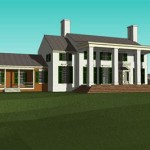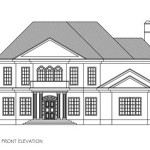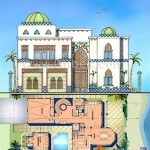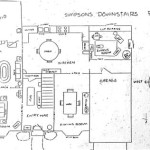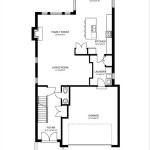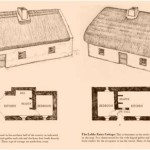House Plans: Energy-Efficient Home Designs
The design and construction of energy-efficient homes have become increasingly important in recent years. Factors driving this trend include growing environmental concerns, rising energy costs, and a desire for greater comfort and sustainability. Energy-efficient home designs prioritize minimizing energy consumption through various strategies, resulting in reduced utility bills, a smaller carbon footprint, and a more comfortable living environment.
Designing an energy-efficient home involves a holistic approach, considering numerous aspects from initial site selection to the types of materials used and the incorporation of renewable energy systems. Successful energy-efficient home designs integrate passive and active strategies to optimize energy performance. Passive strategies work with the natural environment to reduce heating and cooling loads, while active strategies employ mechanical and electrical systems to further enhance energy efficiency.
Passive Solar Design and Orientation
One of the most critical aspects of energy-efficient home design is the consideration of passive solar principles. This involves orienting the house to maximize solar gain in winter and minimize it in summer. The southern exposure of a home typically receives the most sunlight, making it ideal for incorporating large windows and glazing. These windows allow sunlight to penetrate the home during the colder months, providing free heat and reducing the need for artificial heating systems.
Proper orientation also means minimizing window exposure on the east and west sides of the house. East-facing windows can lead to undesirable morning heat gain in the summer, while west-facing windows can cause excessive heat buildup in the afternoon. Shading devices, such as overhangs, awnings, or strategically planted trees, can effectively reduce solar heat gain in the summer months without blocking valuable sunlight during the winter.
Beyond orientation, the design should also incorporate thermal mass. Thermal mass refers to the ability of materials to absorb, store, and release heat. Materials like concrete, brick, and stone can act as thermal batteries, absorbing heat during the day and releasing it slowly at night. This helps moderate temperature fluctuations, keeping the home cooler in the summer and warmer in the winter. The strategic placement of thermal mass within the home can significantly improve its energy performance.
Insulation and Air Sealing
Effective insulation is crucial for maintaining a consistent indoor temperature and minimizing heat loss or gain. A well-insulated home requires less energy for heating and cooling, leading to substantial savings on utility bills. The recommended insulation levels vary depending on the climate, but generally, higher R-values are preferred for walls, ceilings, and floors. R-value is a measure of thermal resistance; the higher the R-value, the better the insulation.
Various types of insulation are available, each with its own advantages and disadvantages. Fiberglass insulation is a common and relatively inexpensive option. Spray foam insulation offers excellent air sealing properties and high R-values but can be more expensive. Cellulose insulation, made from recycled paper, is an environmentally friendly option. The choice of insulation depends on factors such as budget, climate, and personal preferences.
In addition to insulation, air sealing is equally important. Air leaks can allow significant amounts of heat to escape in the winter and enter in the summer, negating the benefits of insulation. Common areas for air leaks include around windows and doors, where pipes and wires penetrate walls, and in attics and basements. Sealing these leaks with caulk, weather stripping, or spray foam can significantly improve a home's energy efficiency. A blower door test can be used to identify and quantify air leaks, allowing homeowners to prioritize sealing efforts.
Efficient Windows, Doors, and Ventilation
Windows and doors are significant sources of heat loss and gain in a home. Choosing energy-efficient windows and doors can significantly reduce energy consumption. Look for windows with low U-factors and low Solar Heat Gain Coefficients (SHGC). The U-factor measures the rate of heat transfer through the window; a lower U-factor indicates better insulation. The SHGC measures the amount of solar heat that passes through the window; a lower SHGC indicates less heat gain.
Double-pane or triple-pane windows with low-E coatings are more energy-efficient than single-pane windows. Low-E coatings are thin, transparent coatings that reflect infrared radiation, reducing heat transfer through the window. Gas fills, such as argon or krypton, between the panes of glass further enhance insulation. Selecting windows with appropriate U-factors and SHGC values for the climate is essential for optimizing energy performance.
Proper ventilation is also crucial for maintaining indoor air quality and preventing moisture buildup. Energy-efficient homes often incorporate mechanical ventilation systems, such as heat recovery ventilators (HRVs) or energy recovery ventilators (ERVs). These systems exchange stale indoor air with fresh outdoor air while recovering heat or energy from the exhaust air. HRVs are best suited for colder climates, while ERVs are better for humid climates.
Natural ventilation strategies can also be incorporated into the design. Operable windows and skylights can provide natural ventilation during moderate weather. Consider the prevailing winds when designing the layout of windows and doors to maximize airflow throughout the home. A whole-house fan can also be used to exhaust hot air from the attic and draw in cool air from outside, reducing the need for air conditioning.
Efficient Heating, Cooling, and Lighting Systems
Selecting energy-efficient heating and cooling systems is essential for minimizing energy consumption. High-efficiency furnaces, air conditioners, and heat pumps can significantly reduce energy bills compared to older, less efficient models. Look for systems with high Annual Fuel Utilization Efficiency (AFUE) ratings for furnaces and high Seasonal Energy Efficiency Ratio (SEER) ratings for air conditioners. Heat pumps offer both heating and cooling capabilities and are particularly efficient in moderate climates.
Programmable thermostats can further enhance the efficiency of heating and cooling systems. These thermostats allow homeowners to set different temperatures for different times of the day, automatically adjusting the temperature when the home is unoccupied or when occupants are sleeping. Smart thermostats can even learn homeowner preferences and adjust the temperature accordingly.
Efficient lighting is another important aspect of energy-efficient home design. Light-emitting diode (LED) lighting is significantly more energy-efficient than incandescent or halogen lighting. LEDs use up to 75% less energy and last much longer. Consider using dimmers to further reduce energy consumption and extend the life of the bulbs. Daylight harvesting, which involves using natural light to reduce the need for artificial lighting, can also be incorporated into the design.
Water Heating and Conservation
Water heating is a significant energy expense in many homes. Choosing an energy-efficient water heater can significantly reduce energy consumption. Tankless water heaters, which heat water on demand, are more energy-efficient than traditional storage tank water heaters. Heat pump water heaters also offer high efficiency by extracting heat from the surrounding air to heat the water.
Water conservation measures can also reduce the amount of energy required for water heating. Low-flow showerheads and faucets can significantly reduce water consumption without sacrificing water pressure. Efficient toilets use less water per flush. Insulating hot water pipes can reduce heat loss and ensure that hot water is readily available when needed.
Graywater recycling systems, which collect and reuse water from showers, sinks, and washing machines, can further reduce water consumption. Graywater can be used for irrigation or toilet flushing, reducing the demand for potable water. Rainwater harvesting, which involves collecting and storing rainwater for later use, is another way to conserve water. Rainwater can be used for irrigation, toilet flushing, or even potable water supply after proper treatment.
Appliances and Electronics
Energy-efficient appliances and electronics can significantly reduce energy consumption. Look for appliances with the Energy Star label, which indicates that they meet certain energy efficiency standards. Energy Star appliances typically use less energy and water than standard models.
Consider using smart power strips, which automatically shut off power to devices that are not in use. Many electronics continue to draw power even when they are turned off, a phenomenon known as phantom load. Smart power strips can eliminate this phantom load, saving energy and money.
Proper ventilation for appliances, especially refrigerators and freezers, is essential for efficient operation. Make sure that there is adequate space around these appliances to allow for proper airflow. Dust and dirt can also reduce the efficiency of appliances, so it is important to clean them regularly.
Renewable Energy Systems
Incorporating renewable energy systems into the design can further reduce reliance on fossil fuels. Solar photovoltaic (PV) panels can generate electricity from sunlight, reducing or even eliminating the need for grid electricity. Solar thermal systems can be used to heat water or space heating.
The feasibility of renewable energy systems depends on factors such as climate, location, and budget. Solar panels are most effective in areas with abundant sunshine. Wind turbines can generate electricity in areas with consistent winds. Ground source heat pumps can provide efficient heating and cooling in areas with suitable soil conditions.
Government incentives and tax credits can help offset the cost of renewable energy systems. Many states and municipalities offer rebates or tax credits for homeowners who install solar panels or other renewable energy systems. These incentives can make renewable energy systems more affordable and accessible.
Building Materials and Sustainable Construction Practices
The choice of building materials can significantly impact a home's energy efficiency and environmental footprint. Consider using locally sourced materials to reduce transportation costs and support local economies. Choose materials with low embodied energy, which refers to the energy required to extract, process, and transport the material.
Recycled and reclaimed materials can also reduce the environmental impact of construction. Reclaimed wood, recycled steel, and recycled concrete can be used in place of virgin materials. These materials often have unique character and can add aesthetic appeal to the home.
Sustainable construction practices can minimize waste and pollution during the building process. Proper planning and material management can reduce waste generation. Using low-VOC (volatile organic compound) paints and adhesives can improve indoor air quality. Implementing erosion and sediment control measures can protect water quality during construction.

Energy Efficient Home Design Plans Cad Pro

Energy Efficient Homes Reynolds Signature

Energy Efficient House Plans Home Designs The Designers

Energy Efficient Home Things To Consider Perry Homes

Green By Design The Art Of Crafting Energy Efficient Homes Kevin Szabo Jr Plumbing Services Local Plumber Tinley Park Il

Net Zero Home Design Popular Plans Energy

Sustainable Building In 2024 Energy Efficient Kit Homes

Cool Energy Efficient Concrete House Plans Houseplans Blog Com

Energy Efficient Home Design Strategies For Diffe Climates
Seven Efficient And Flexible Floor Plans Builder

